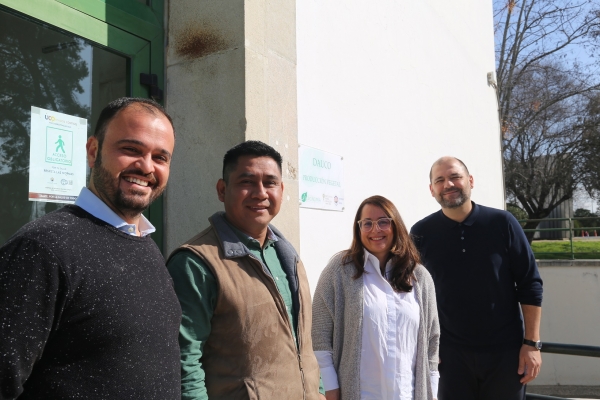In a context of climatic emergency, in which public regulations and strategies increasingly seek to reduce the environmental impact produced by chemical synthesis phytosanitary products, the development of new fertilization strategies and biological control agents based on natural products is essential to move towards sustainable agriculture. Thus, entomopathogenic fungi have become an effective tool in the shift towards more eco-friendly agriculture.
Entomopathogenic fungi (microorganisms that inflict disease on pest insects) function as a powerful biocontrol agent, a potential that the UCO Agricultural Entomology Unit has managed to exploit in a sustainable olive fly control product. These microorganisms have another function too: they help plants cope with nutritional deficiencies, such as those involving iron, thereby bolstering their production.
With the aim of understanding the benefits of entomopathogenic fungi in nutrient absorption, researchers withthe María de Maeztu Excellence Unit - Department of Agronomy at the UCO (DAUCO) Fabián García, Enrique Quesada, María José García and Meelad Yousef described, for the first time, the mechanisms that the Metarhizium brunneum EAMa 01/58-Su strain uses to allow plants to increase their iron content.
After comparing three strains of the Beauveria bassiana and Metarhizium bruneum fungi, they found that M. brunneum EAMa 01/58-Su was that which made the most iron available to the plant. They then studied which iron deficiency responses were induced by the fungus. "We verified that it induces the two main iron acquisition genes. We could say that it makes plants more efficient at absorbing iron from the soil," explained researcher María José García.
These microorganisms help plants with the acquisition of iron in two ways: direct and indirect. "The direct mechanisms are the part at the molecular level, the changes made by the genes that induce these microorganisms to provide the plant with more iron; while the indirect route occurs when they are in the soil, without affecting the response of the plant, simply because being in the soil makes iron more available to the plant," noted researcher Meelad Yousef.
In this study, carried out on cucumber and melon, fruit of the synergy between the Plant Physiology and Agricultural Entomology groups, it was found that from the first day the solution with entomopathogenic fungi is applied, the plant begins to induce responses to iron deficiency, which is very important in Spain, where calcareous soils (which make it more difficult for plants to absorb iron) are very abundant.
In this way, value is added to the bioinsecticide developed from this strain. The use of this product against key pests affecting these crops, such as the aphid and whitefly, is very effective and sustainable (being made from these microorganisms, it does not harm the environment). And now it also boasts the additional advantage of something certified by this study: it boosts the acquisition of iron, so growers can reduce chemical fertilization (reducing costs and environmental and damage).
This work expands knowledge of a biocontrol agent that has now been proven to also help plants be more efficient in the acquisition of iron, providing solutions to the great challenge facing agriculture: minimizing the use of chemical synthesis products that have a negative footprint on the environment.
García-Espinoza, F.; Quesada-Moraga, E.; García del Rosal, M.J.; Yousef-Yousef, M. Entomopathogenic Fungi-Mediated Solubilization and Induction of Fe Related Genes in Melon and Cucumber Plants. J. Fungi 2023, 9, 258. https://doi.org/10.3390/jof9020258


